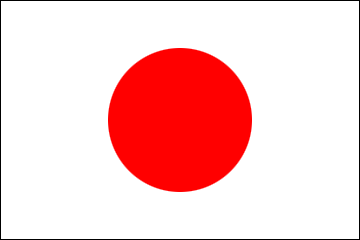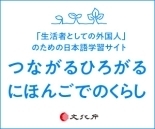Japan-Washington Economic Relations
2022/5/3
The History of Trade between Washington State and Japan
Trade between Washington State and Japan has existed, in one form or another, since before Washington's statehood in 1889.
One of the more significant "exchanges" was the historic arrival of three Japanese sailors to the Pacific Northwest in 1834, near Cape Flattery. Otokichi, Kyukichi and Iwakichi were the only survivors of the Hojun-maru, which left Toba Port, Mie Prefecture in 1832, but was lost at sea on its way to Edo (present Tokyo). Even before this incident took place, the rigged sailing vessel, Lady Washington, carrying sea otter pelts from the Northwest for trade, became the first American vessel to make landfall in Japan in 1791.
Later, the Miike Maru became the first Japanese steamer to inaugurate a regular commercial service between the US and Japan. When the ship came into Seattle on August 31, 1896, she brought along 488 tons of freight, 8 passengers and 253 Japanese immigrants. Since Seattle was the first port in the mainland US to establish regular contact with Japan, it soon became America's commercial gateway to Japan and Northwest Asia.
For Japan, this shipping line became the major means of transporting goods back and forth between Japan and the outside world. The Miike-Maru transported lumber, coal, wheat and metals from Washington to Japan, while it brought soybean oil, silk, tea, ginger and straw matting to Seattle. Trade between Japan and Washington has grown remarkably over the years, largely as a result of the two countries geographical proximity. By ship from Japanese ports to Washington ports it takes 13 days, about 30 hours closer than to the ports of South California and 16 days closer than to the US East Coast, while by air Seattle is only 10 hours from Tokyo.
Japan and Washington State have come a long way in the past 100 years, both in terms of trade volume and human relations. Human relations between Japan and Washington date back more than 100 years. In 1880, the first Japanese resident in Washington was recorded by the census. In the beginning, Japanese came from Oregon to Washington and the Japanese population in Washington gradually expanded. The number of Japanese residents has dramatically increased since 1896, when the Miike-Maru arrived in Seattle. In 1890, there were only 125 Japanese in Seattle, while in 1900 the number was 3900.
In 1895, the Japanese Consulate was established in Tacoma. It then moved to Seattle in l901. In 1956, the Consulate became the Consulate-General. At the end of the 19th century and at the beginning of the 20th, Japanese immigrants in Washington were mainly engaged in fishery, sawmill labor and railway construction. However, there were also students, merchants and farmers. Some came from Japan to the US to discover the new world, while others came to make their fortunes. During the 1910's, more Japanese came to Seattle, where they ran farms, shops, restaurants and inns. Japanese immigration to the US is closely related to the history between the two countries. The first Japanese immigrants to the US arrived in Hawaii in 1868, but the numbers were moderate until 1885, when the Japanese government officially lifted its ban on emigration. After that, the number of Japanese immigrants increased until 1908, when the two governments concluded the Gentlemen's Agreement, in which the Japanese government, at the behest of the US government, "voluntarily" suspended the issuing of passports to Japanese citizens emigrating to the US. However, in spite of this agreement, the inflow of Japanese continued to increase gradually until the Immigration Act of 1924 was enacted in the US.
Despite the lower influx, the Japanese community in Washington kept growing over the next few years. Family members of Japanese immigrants were still allowed to enter the US, and some Japanese moved from other states of the US to Washington. Then, between 1930 and 1940, the Japanese community in Washington shrank as a result of the Depression. During World War II, Japanese-Americans were ordered to evacuate Washington, and the 1950 census shows a drastic drop of Japanese descent number only about 60-70% of the prewar Japanese population returned to Washington after their wartime evacuation. Nevertheless, the Japanese community has steadily grown over the past 50 years. Today, more than 100 years after the first Japanese arrived in Washington, about 85,000 Japanese-Americans live in this state.
One of the more significant "exchanges" was the historic arrival of three Japanese sailors to the Pacific Northwest in 1834, near Cape Flattery. Otokichi, Kyukichi and Iwakichi were the only survivors of the Hojun-maru, which left Toba Port, Mie Prefecture in 1832, but was lost at sea on its way to Edo (present Tokyo). Even before this incident took place, the rigged sailing vessel, Lady Washington, carrying sea otter pelts from the Northwest for trade, became the first American vessel to make landfall in Japan in 1791.
Later, the Miike Maru became the first Japanese steamer to inaugurate a regular commercial service between the US and Japan. When the ship came into Seattle on August 31, 1896, she brought along 488 tons of freight, 8 passengers and 253 Japanese immigrants. Since Seattle was the first port in the mainland US to establish regular contact with Japan, it soon became America's commercial gateway to Japan and Northwest Asia.
For Japan, this shipping line became the major means of transporting goods back and forth between Japan and the outside world. The Miike-Maru transported lumber, coal, wheat and metals from Washington to Japan, while it brought soybean oil, silk, tea, ginger and straw matting to Seattle. Trade between Japan and Washington has grown remarkably over the years, largely as a result of the two countries geographical proximity. By ship from Japanese ports to Washington ports it takes 13 days, about 30 hours closer than to the ports of South California and 16 days closer than to the US East Coast, while by air Seattle is only 10 hours from Tokyo.
Japan and Washington State have come a long way in the past 100 years, both in terms of trade volume and human relations. Human relations between Japan and Washington date back more than 100 years. In 1880, the first Japanese resident in Washington was recorded by the census. In the beginning, Japanese came from Oregon to Washington and the Japanese population in Washington gradually expanded. The number of Japanese residents has dramatically increased since 1896, when the Miike-Maru arrived in Seattle. In 1890, there were only 125 Japanese in Seattle, while in 1900 the number was 3900.
In 1895, the Japanese Consulate was established in Tacoma. It then moved to Seattle in l901. In 1956, the Consulate became the Consulate-General. At the end of the 19th century and at the beginning of the 20th, Japanese immigrants in Washington were mainly engaged in fishery, sawmill labor and railway construction. However, there were also students, merchants and farmers. Some came from Japan to the US to discover the new world, while others came to make their fortunes. During the 1910's, more Japanese came to Seattle, where they ran farms, shops, restaurants and inns. Japanese immigration to the US is closely related to the history between the two countries. The first Japanese immigrants to the US arrived in Hawaii in 1868, but the numbers were moderate until 1885, when the Japanese government officially lifted its ban on emigration. After that, the number of Japanese immigrants increased until 1908, when the two governments concluded the Gentlemen's Agreement, in which the Japanese government, at the behest of the US government, "voluntarily" suspended the issuing of passports to Japanese citizens emigrating to the US. However, in spite of this agreement, the inflow of Japanese continued to increase gradually until the Immigration Act of 1924 was enacted in the US.
Despite the lower influx, the Japanese community in Washington kept growing over the next few years. Family members of Japanese immigrants were still allowed to enter the US, and some Japanese moved from other states of the US to Washington. Then, between 1930 and 1940, the Japanese community in Washington shrank as a result of the Depression. During World War II, Japanese-Americans were ordered to evacuate Washington, and the 1950 census shows a drastic drop of Japanese descent number only about 60-70% of the prewar Japanese population returned to Washington after their wartime evacuation. Nevertheless, the Japanese community has steadily grown over the past 50 years. Today, more than 100 years after the first Japanese arrived in Washington, about 85,000 Japanese-Americans live in this state.
Recommended Information
- Useful Links (Learn about Japan, education, travel, etc.)
- Japan Information and Culture Center (JICC)

- Japan National Tourism Organization (JNTO)

- Niponica (Discovering Japan)

- Visa
- Customs Information
- Past Events
- Upcoming Events
- Sister Cities
- Japan-US Relations (WA, MT, ID)
- Japan-Washington Economic Relations
- Japan-Montana Economic Relations
- Japan-US Relations



